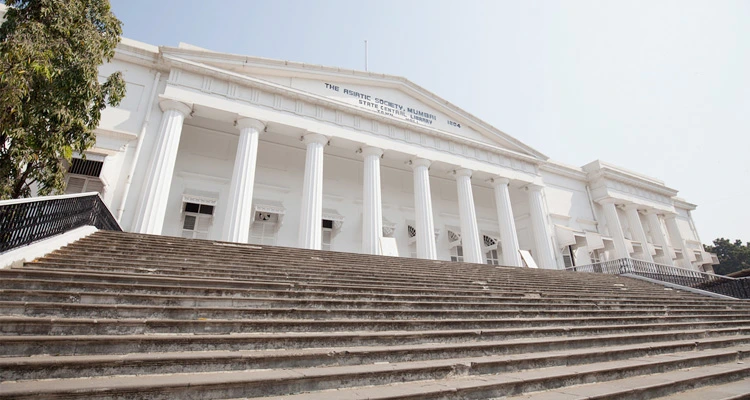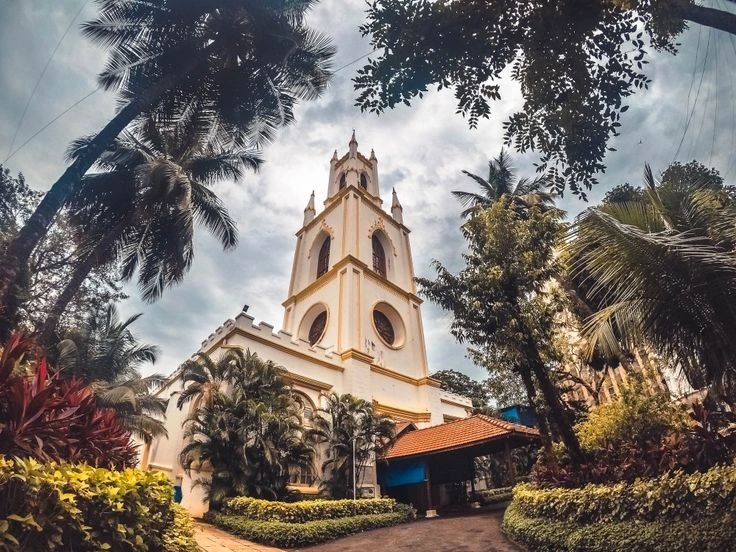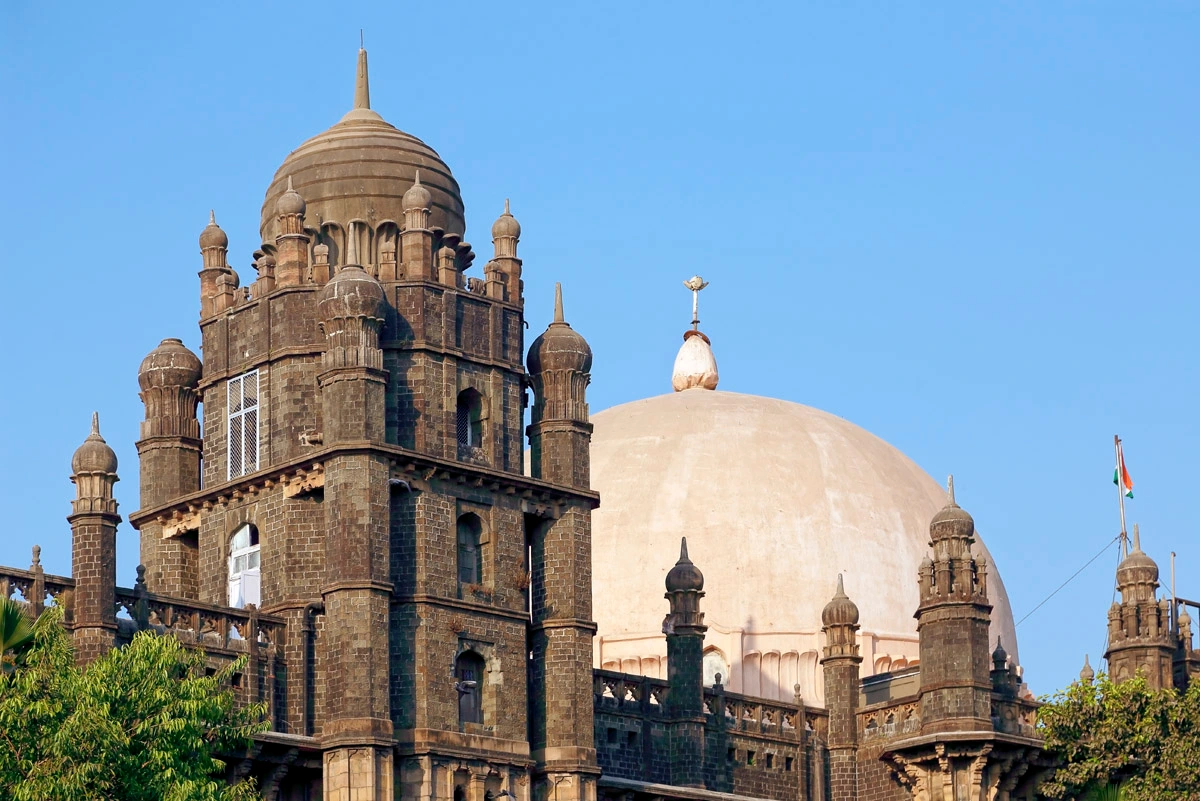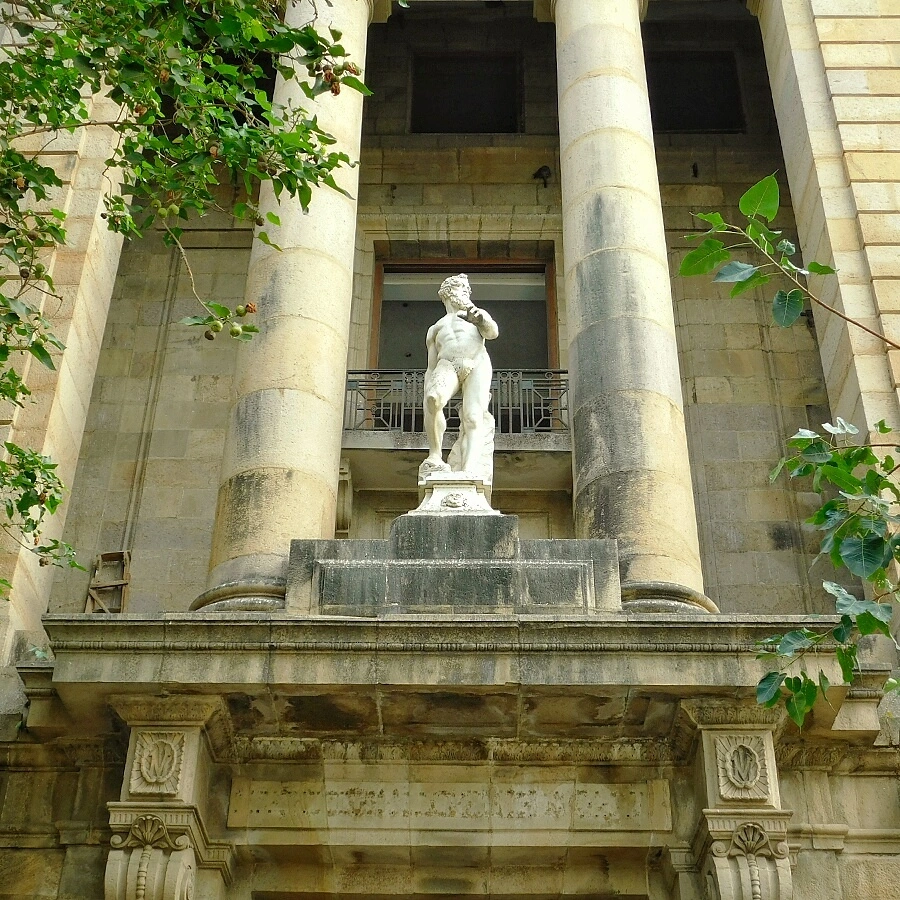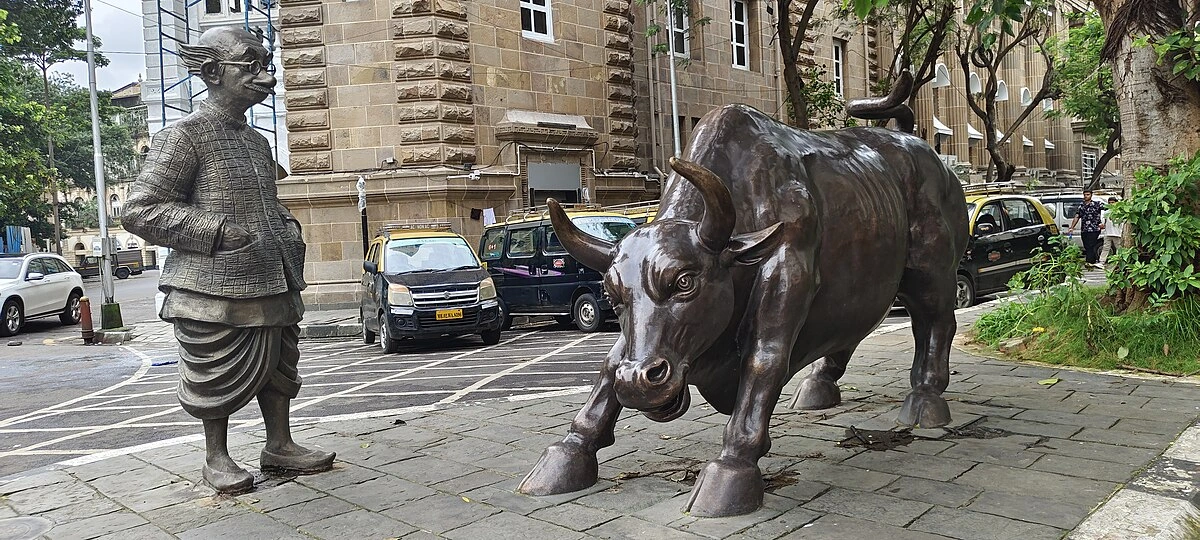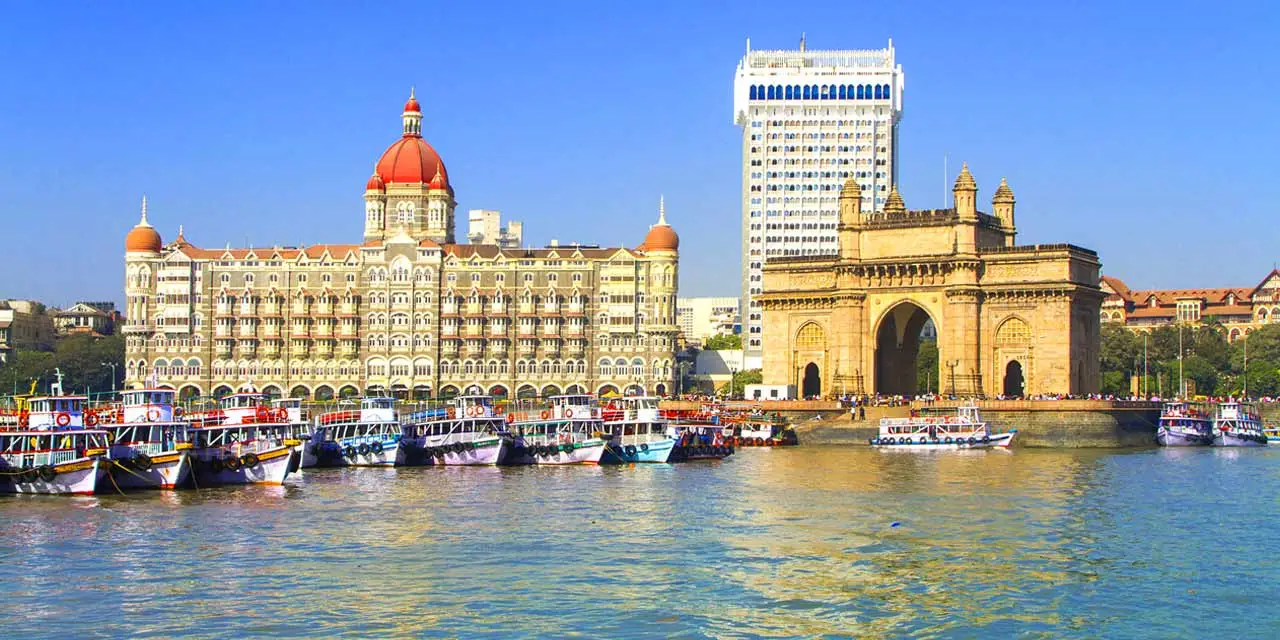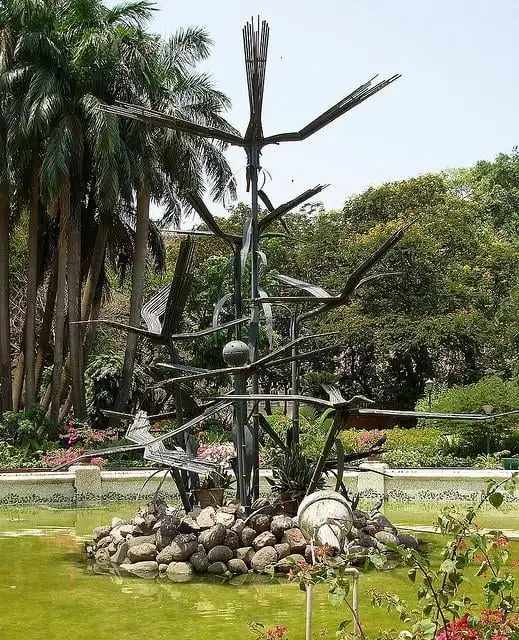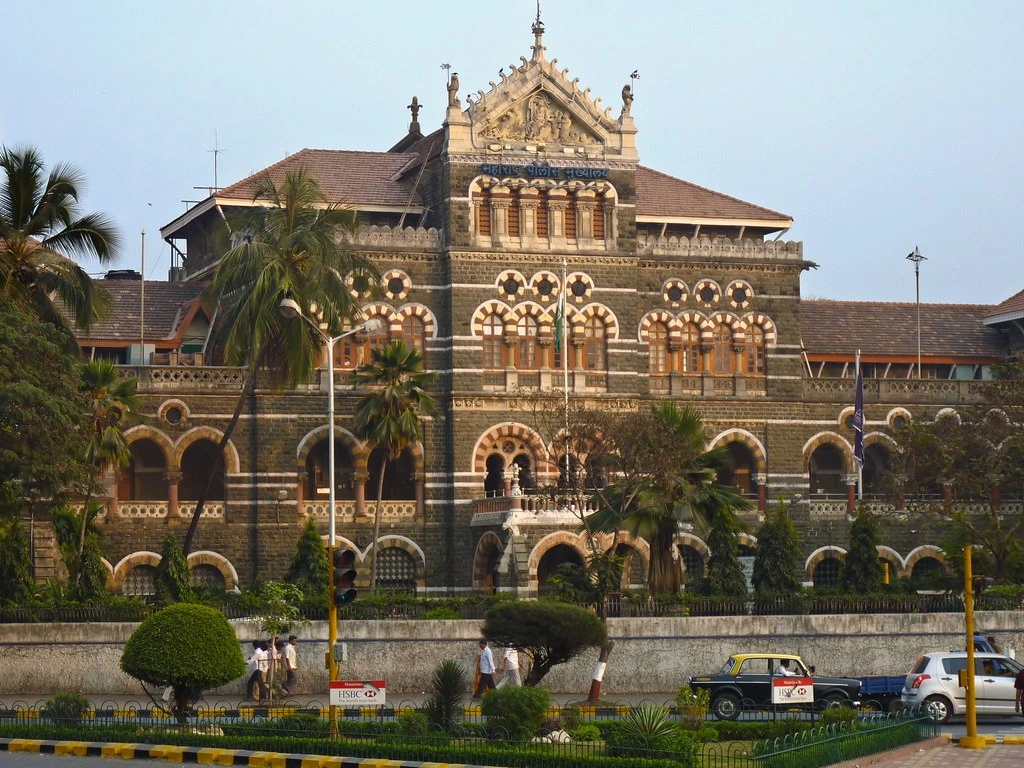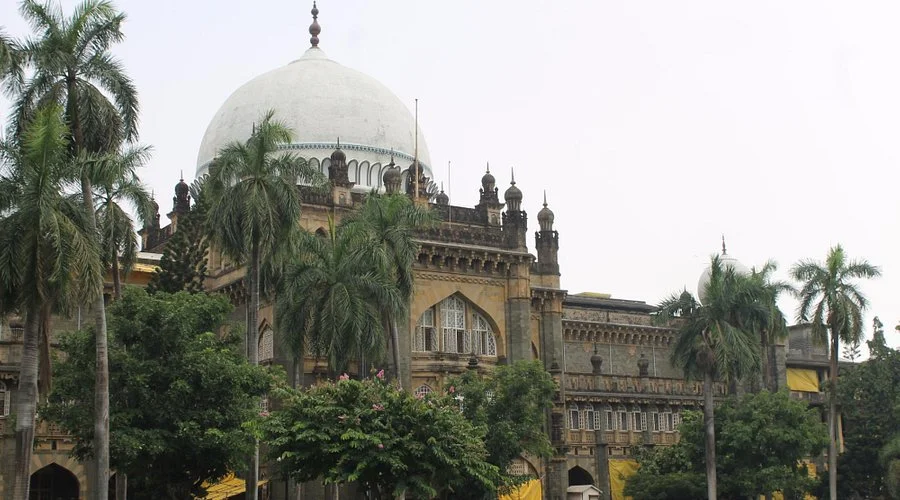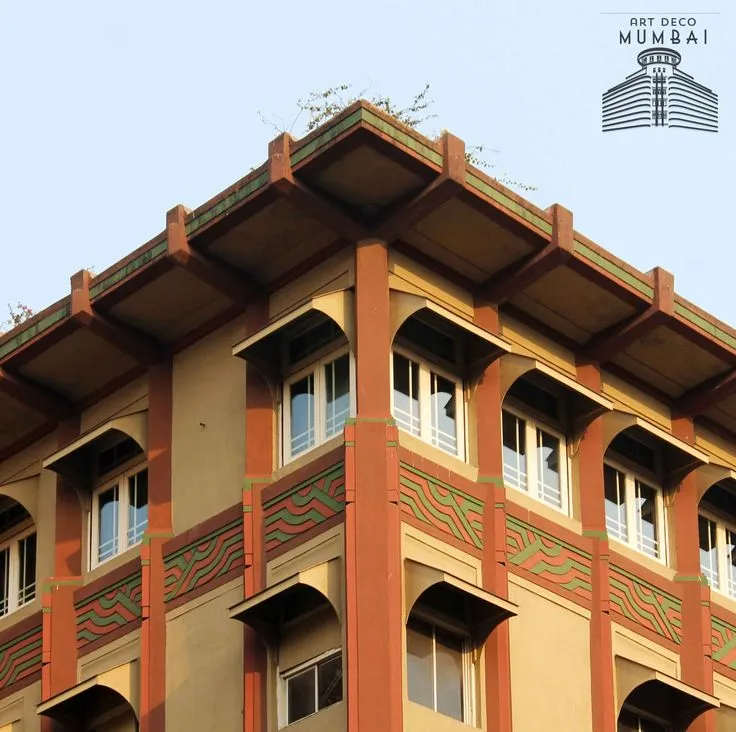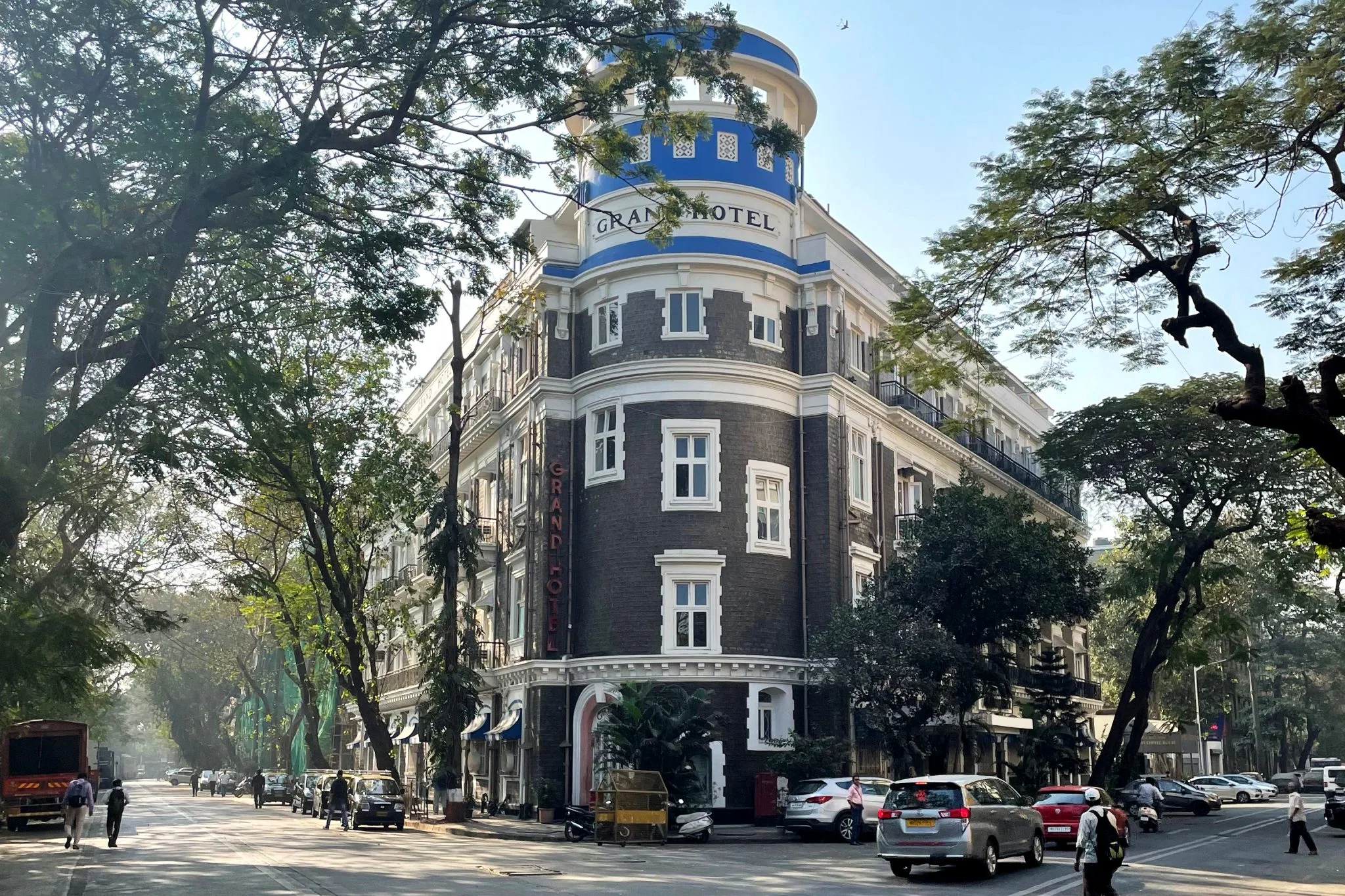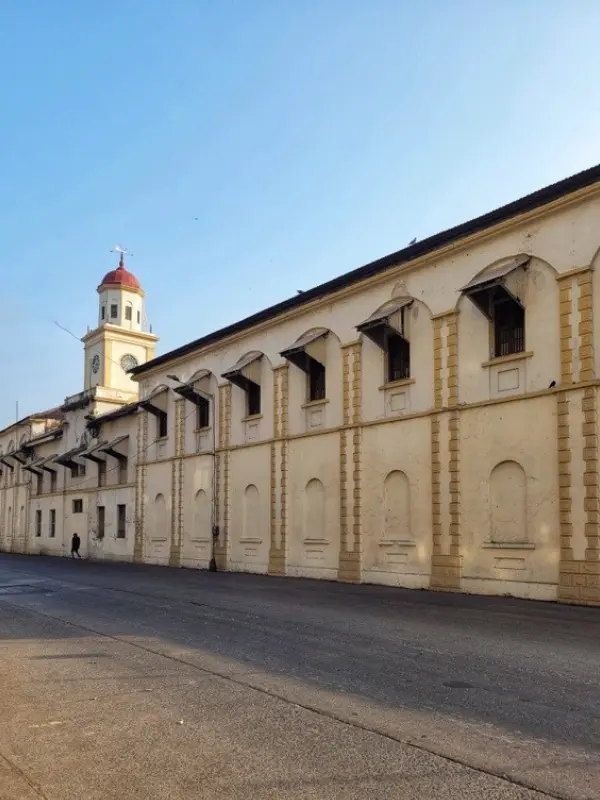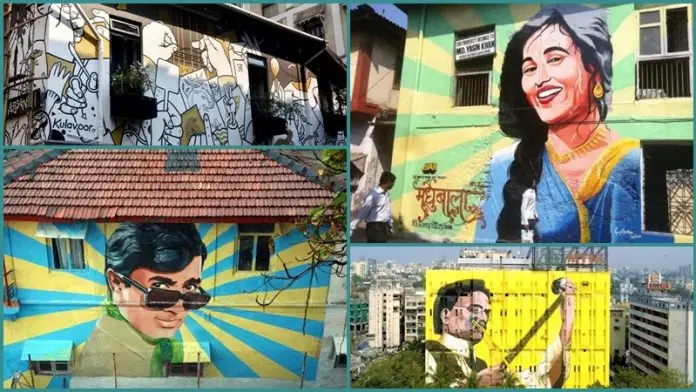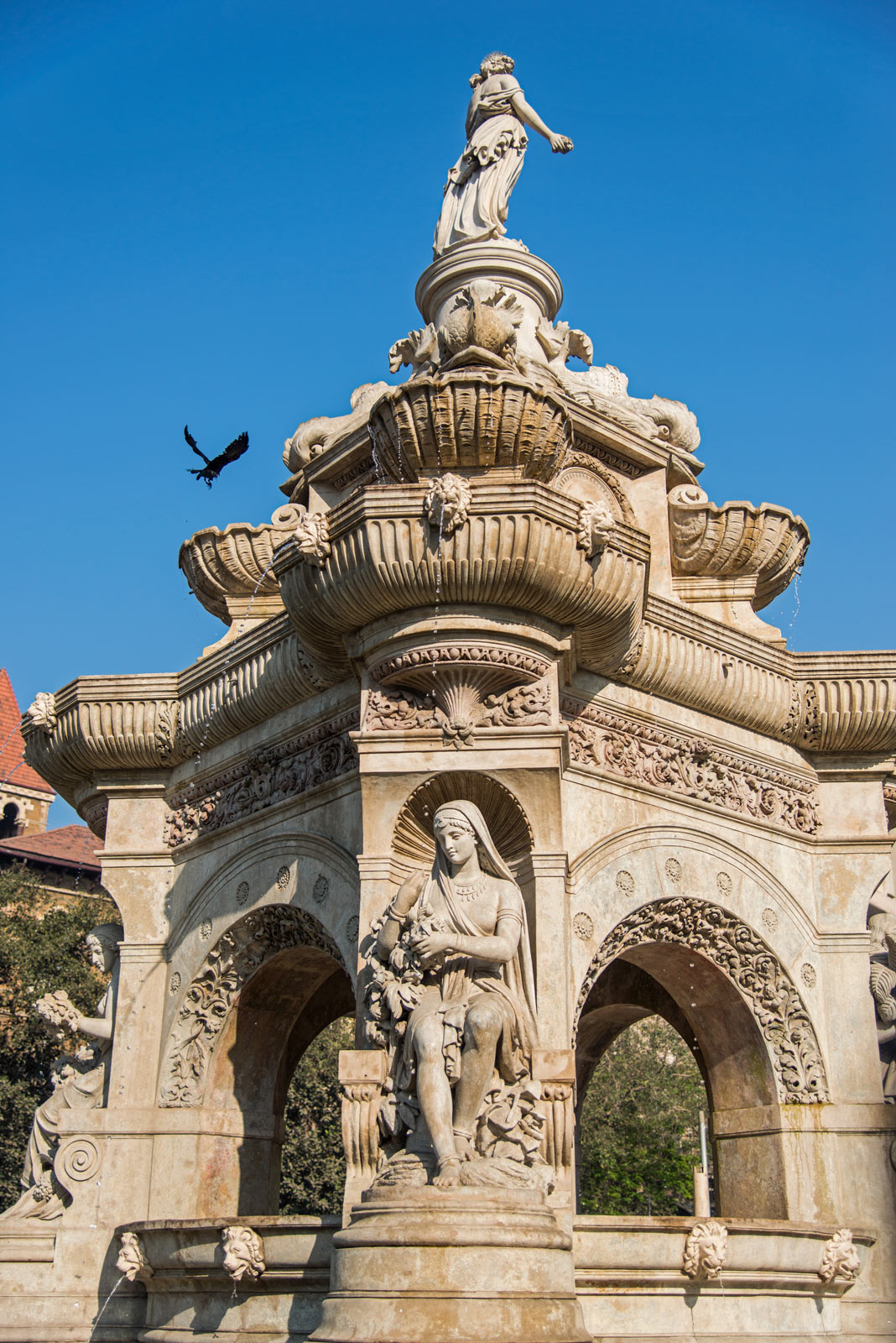South Mumbai Colonial Heritage Walking Tour: From Ballard Estate to Gateway of India | Free Walking Tour
- 2.5 Hours
- Maximum Capacity: 10
Adult
Child
Description
✨ South Mumbai Colonial Heritage Walking Tour ✨
Embark on the South Mumbai Colonial Heritage Walking Tour, a journey through the heart of Mumbai’s colonial past and architectural grandeur. This immersive walk takes you through the iconic landmarks and hidden treasures that shaped Bombay during the British era. From the elegant avenues of Ballard Estate to the cultural richness of the Town Hall (Asiatic Library), every step reveals a story of trade, power, and transformation.
Discover the majestic General Post Office (GPO) with its Indo-Saracenic architecture, the powerful presence of the Reserve Bank of India (RBI), and the historic Bombay Stock Exchange (BSE) — reminders of Mumbai’s role as the financial capital of India. Walk past the commanding Lion Gate and the fortified Naval Dockyard Walls, echoes of the city’s maritime strength.
As the tour continues, explore the artistic brilliance of the Prince of Wales Museum (Chhatrapati Shivaji Maharaj Vastu Sangrahalaya), before arriving at the most iconic landmarks of all — the Gateway of India and the Taj Mahal Palace Hotel, symbols of Mumbai’s global identity.
More than just a walk, this heritage experience uncovers fascinating anecdotes, colonial legacies, and the cultural evolution that makes South Mumbai one of the most historically significant districts in India. Whether you’re a history enthusiast, architecture lover, or first-time visitor, this walking tour of South Mumbai’s colonial heritage is the perfect way to connect with the soul of the city. No upfront cost—just tip what you feel the tour is worth!
Duration
2.5 Hours
Group Size
10
Language
English
✨ Highlights of the South Mumbai Heritage Walking Tour
-
🚉 Chhatrapati Shivaji Maharaj Terminus (CSMT) – Explore Mumbai’s grand UNESCO World Heritage railway station, a Victorian Gothic masterpiece.
-
🏛️ BMC & Town Hall (Asiatic Library) – Admire colonial-era civic buildings that reflect Mumbai’s administrative and cultural history.
-
📬 General Post Office (GPO) – Step into an Indo-Saracenic landmark with a stunning central dome.
-
⚓ Ballard Estate & Port Trust Buildings – Wander through elegant Edwardian structures tied to Mumbai’s maritime past.
-
🏦 RBI & Bombay Stock Exchange (BSE) – See the institutions that shaped India’s financial capital.
-
🏰 Lion Gate & Naval Dockyard Walls – Glimpse Mumbai’s military and colonial defenses.
-
🖼️ Prince of Wales Museum (Chhatrapati Shivaji Maharaj Vastu Sangrahalaya) – Explore India’s finest art and history collections.
-
🛳️ Gateway of India & Taj Mahal Palace Hotel – End your walk at Mumbai’s most iconic landmarks, where history, luxury, and the Arabian Sea meet.
Included
- Specialized Guide
- Lots of Interesting Stories
- Interact with Locals
- Get a little Exercise
- Eco-Friendly
- Meet new Interesting People
- Click Beautiful Photos
- Memories for a Lifetime
- A Soulful Experience
- Discover the Hidden Gems
Excluded
- Transport to the Meeting Point
- Meals or Snacks (Unless Pre-Arranged)
- Inside Entry to Homes or Shrines
- Professional Photography or Videography
- Heavy Historical Lectures
- Walking Gear or Water Bottles
- Restroom Facilities
- Shopping Stops or Tourist Traps
Travel Itinerary
Starting Point - 🚂 CSMT – Chhatrapati Shivaji Maharaj Terminus
Discover CSMT (Chhatrapati Shivaji Maharaj Terminus), a UNESCO World Heritage Site and Mumbai’s busiest railway station. Built in 1887, this Indo-Gothic masterpiece blends Victorian and Indian architecture with intricate carvings, stained glass, and iconic turrets. A must-see highlight of any South Mumbai walking tour, CSMT is both a historic landmark and the heartbeat of the city.
Stop 2 - 🏛️ BMC Building – Brihanmumbai Municipal Corporation
Standing tall opposite CSMT, the BMC Building is one of Mumbai’s most striking Gothic Revival landmarks. Completed in 1893, its grand central dome, arched windows, and stone carvings showcase colonial-era craftsmanship. Today, it remains the headquarters of the city’s civic body while serving as an architectural gem on every South Mumbai heritage walk.
Stop 3 - 🎭 Capitol Cinema – Mumbai’s Historic Theatre
Opened in 1879, Capitol Cinema is one of Mumbai’s oldest surviving theatres, blending Neo-Classical architecture with colonial charm. Located near CSMT, it once hosted opera, plays, and early Bollywood screenings, making it a cultural hub of the city. Though its glory has faded, Capitol remains a nostalgic landmark and an important stop on any Mumbai heritage walking tour.
Stop 4 - 📮 General Post Office (GPO) – Indo-Saracenic Landmark of Mumbai
Built in 1913, the General Post Office (GPO) Mumbai is a stunning Indo-Saracenic masterpiece designed by John Begg. Its grand central dome, intricate stonework, and arched corridors make it one of South Mumbai’s most iconic colonial-era buildings. Still functioning as the city’s main postal hub, the GPO stands as a reminder of Mumbai’s importance in global trade and communication. A must-see highlight on any South Mumbai walking tour.
Stop 5 - 🏛️ Ballard Estate – Mumbai’s Little Europe
Built in the early 20th century on land reclaimed from the sea, Ballard Estate was designed by British architect George Wittet in a grand Edwardian Baroque style. With wide avenues, stately offices, and uniform colonial façades, this district earned the nickname “Little Europe of Mumbai.” Once the hub of shipping and commerce, it remains one of South Mumbai’s most atmospheric neighborhoods, where heritage architecture meets the city’s bustling port history. A highlight for anyone exploring on a Mumbai walking tour.
Stop 6 - 🏨 The Grand Hotel – Mumbai’s First Luxury Hotel
Opened in 1922, the Grand Hotel in Ballard Estate was one of Mumbai’s earliest luxury hotels, designed by George Wittet, the same architect behind the Gateway of India and Prince of Wales Museum. Its Indo-European design, high ceilings, and elegant arches made it a symbol of sophistication in the colonial era. Today, the Grand Hotel continues to welcome guests while standing as a heritage gem amidst Ballard Estate’s European-style avenues. A fascinating stop on your South Mumbai heritage walk.
Stop 7 - ⚓ Alexandra Dock – Gateway to Mumbai’s Maritime Legacy
Opened in 1914 and named after Queen Alexandra, Alexandra Dock (today part of Indira Dock) played a vital role in transforming Mumbai into a global maritime hub. It was designed to handle larger steamships of the time and became the lifeline of the city’s trade, especially for cotton and textiles. Walking past the dock, you can almost imagine the hustle of cargo, sailors, and merchants that once made this spot one of the busiest in the British Empire. A must-see for those exploring Mumbai’s port history on a walking tour.
Stop 8 - 🏛️ Ballard Bunder Gatehouse – A Forgotten Colonial Landmark
Standing as a remnant of Mumbai’s colonial past, the Ballard Bunder Gatehouse once marked the entrance to the bustling Ballard Pier. Built in 1920 to commemorate the visit of King George V and Queen Mary, it symbolized the grandeur of Bombay as the “Gateway to India” before the Gateway itself was completed. Today, this Indo-Saracenic stone structure quietly overlooks the docks, offering a glimpse into the days when the city was the beating heart of maritime trade. A fascinating stop for anyone interested in Mumbai’s colonial architecture and port history.
Stop 9 - 🚉 Ballard Pier Mole Station – Gateway to the Harbour
The Ballard Pier Mole Station was once the grand entry point for visitors arriving in Bombay by sea. Built in 1915, it connected directly to the passenger steamships docking at Alexandra Dock, offering travelers a seamless transfer from ship to train. Designed in the Indo-Saracenic style with its striking arches and stonework, the station symbolized Bombay’s role as the gateway to India during the colonial era. Though no longer in use as a passenger terminal, the building stands as a heritage landmark, recalling the days when Ballard Estate was the city’s busiest commercial and maritime hub.
Stop 10 - 🏨 Darabshaw House – Once the Old Regent Hotel
Before it became Darabshaw House, this elegant colonial building was known as the Old Regent Hotel, one of the earliest luxury hotels in South Bombay. In the early 1900s, it welcomed merchants, travelers, and dignitaries arriving through the nearby Alexandra Dock, making it a hub of social and commercial activity. Later acquired and renamed after Parsi philanthropist Darabshaw Hormusji, the building stands as a reminder of Ballard Estate’s transformation from a bustling port neighborhood into a district of stately offices. Its arched windows, stone façade, and timeless design continue to echo stories of Bombay’s cosmopolitan past.
Stop 11 - 🕊️ Port Trust War Memorial – Honouring Bombay’s Maritime Heroes
The Port Trust War Memorial, located in Ballard Estate, is a solemn tribute to the brave employees of the Bombay Port Trust who lost their lives during World War I and World War II. Built in the early 20th century, this elegant memorial with its carved stone panels and inscriptions serves as a reminder of Bombay’s critical role in the global maritime trade and war efforts. Surrounded by colonial-era buildings, it stands quietly today, inviting visitors to pause and reflect
Stop 12 - 🏛️ The New Customs House – Gateway to Colonial Trade
The New Customs House in Mumbai, built in 1933, is one of the city’s finest colonial-era government buildings and a symbol of Bombay’s maritime legacy. Designed in an imposing Indo-European style, it served as the hub for managing customs and trade when Mumbai was a bustling port city under British rule. Even today, it remains an important landmark near Ballard Estate, reflecting the city’s historic role as the gateway of India’s commerce and trade.
Stop 13 - 🪙 Mint House – The Legacy of Bombay’s Coinage
The Mint House in Mumbai, established in the early 19th century, was where coins of the British Empire were struck for circulation across India. Built in neoclassical style with grand Corinthian columns, this historic landmark in Ballard Estate reflects the city’s role as a financial and commercial hub. Though it no longer functions as a mint, the building still stands as a reminder of colonial Bombay’s economic power and the origins of modern Indian currency.
Stop 14 - ⚓ The Port House – Nerve Centre of Bombay’s Maritime Trade
The Port House in Mumbai, located in Ballard Estate, was once the administrative hub of the Bombay Port Trust, the institution that shaped the city’s rise as India’s premier maritime gateway. Built in the early 20th century, its stately façade and colonial-era architecture reflect the significance of shipping and trade in colonial Bombay’s prosperity. From here, officials oversaw the bustling docks, warehouses, and cargo ships that connected Bombay to the world. Today, the building stands as a heritage symbol of Mumbai’s long maritime legacy.
Stop 15 - 💰 Reserve Bank of India – Guardian of the Nation’s Economy
The Reserve Bank of India building in Mumbai, located at Fort, is the headquarters of the country’s central bank and the heart of India’s financial system. Established in 1935, the RBI regulates currency, credit, and monetary policy, shaping the nation’s economic stability. Its imposing stone structure reflects both authority and elegance, making it a landmark of colonial-era architecture and financial history. For visitors, the RBI building represents not just banking, but the story of Mumbai as the financial capital of India.
Stop 16 - 🪙 Government Mint – Shaping India’s Currency
The Government Mint in Mumbai, established in 1829 and later shifted to its present Byculla location, has been one of the country’s most important coin-producing facilities. For decades, it minted coins, medals, and official seals for India, continuing the city’s long legacy as a financial powerhouse. While entry is restricted to the public, the imposing structure and its history reflect Mumbai’s vital role in shaping the nation’s currency and economy. A stop here connects the dots between colonial trade, modern finance, and the timeless value of money.
Stop 17 - ⚓ INS Angre – Naval Base of Mumbai’s Maritime Legacy
INS Angre in Mumbai is the shore-based logistics and administrative hub of the Western Naval Command. Named after the legendary Maratha Admiral Kanhoji Angre, who dominated the Arabian Sea in the 18th century, this base reflects India’s enduring naval heritage. Located in Colaba, INS Angre continues to serve as the backbone of naval operations while honoring the maritime spirit that has always defined Mumbai. For visitors on a heritage walk, it highlights the city’s strategic importance as a naval stronghold and its connection to India’s proud seafaring past.
Stop 18 - 🏰 Bombay Castle – The Oldest Fort in Mumbai
Built by the Portuguese in the 16th century and later fortified by the British East India Company, Bombay Castle is the oldest surviving structure in the city. Once the heart of the original fortified town of Bombay, it served as the Governor’s residence and the seat of colonial power. Today, though it lies within the restricted precincts of the Indian Navy, Bombay Castle remains a powerful reminder of Mumbai’s transformation from a cluster of fishing villages into a global port city.
Stop 19 - 📚 Town Hall & Asiatic Library – Mumbai’s Neoclassical Landmark
The Town Hall, home to the iconic Asiatic Society of Mumbai Library, is one of South Mumbai’s most striking neoclassical buildings. Built in 1833, its grand flight of steps, Grecian columns, and stately portico make it a favorite backdrop for Bollywood films and photographs. Inside, the library houses over 100,000 rare books, ancient manuscripts, and priceless maps—including the original Italian manuscript of Dante’s Divine Comedy. A true symbol of Mumbai’s intellectual and cultural heritage, it stands as a bridge between the city’s colonial past and vibrant present.
Stop 20 - 🌳 Horniman Circle – Mumbai’s Historic Colonial Plaza
Horniman Circle is a beautiful 19th-century garden square in the heart of South Mumbai, surrounded by grand colonial-era buildings. Originally laid out in the 1860s, it was designed as a formal European-style plaza with a central garden and arched façades all around. Today, it’s not only a green oasis but also a hub of history—the circle houses the Asiatic Library, the Bombay Stock Exchange, and elegant heritage offices. Named after Benjamin Horniman, the editor who supported India’s independence, this landmark is a must-see for those exploring the heritage of Mumbai.
Stop 21 - 📰 Bombay Samachar Building – India’s Oldest Newspaper Office
The Bombay Samachar Building on Horniman Circle is home to Bombay Samachar, Asia’s oldest continuously published newspaper, founded in 1822. This iconic red-stone heritage structure has witnessed nearly two centuries of Mumbai’s transformation—from colonial times to independence and beyond. Its striking façade reflects Gothic influences, while inside, generations of journalists chronicled the city’s milestones. For heritage lovers, the building stands as a reminder of Mumbai’s deep connection with press freedom and civic life.
Stop 22 - ⛪ St. Thomas Cathedral – Mumbai’s First Anglican Church
Built in 1718, St. Thomas Cathedral is the oldest Anglican church in Mumbai and a serene landmark amidst the bustle of Fort. Its Neo-Classical architecture, grand arched interiors, and marble memorials tell stories of British officers, merchants, and sailors who once shaped the city. Designated as a UNESCO Asia-Pacific Heritage Site, the cathedral is not just a place of worship but also a symbol of Mumbai’s colonial beginnings and maritime legacy. Visiting this site offers a quiet moment to step back into the city’s 300-year-old history.
Stop 23 - 🐂 The Bull & The Common Man – Iconic Sculpture of Mumbai’s Financial District
The Bull & The Common Man statue in Mumbai is a striking bronze sculpture that captures the spirit of India’s financial markets. Installed near Horniman Circle, the artwork symbolizes the energy of the stock market bull run alongside the everyday investor – the “common man.” Created by artist Kantilal Patel in the early 1990s, it represents Mumbai’s status as the financial capital of India and serves as a popular photo spot for visitors exploring the historic Fort district.
Stop 24 - 📈 Bombay Stock Exchange (BSE) – Heart of India’s Financial Capital
The Bombay Stock Exchange (BSE), located on Dalal Street in Fort, Mumbai, is Asia’s oldest stock exchange, established in 1875. Today, it stands as a symbol of India’s booming financial markets and economic growth. The BSE building, with its iconic curved façade, dominates the city’s financial district and is a must-see for anyone exploring Mumbai’s colonial and modern heritage. As the hub of global trading in India, it reflects both the city’s historic trading legacy and its role as a powerhouse in the world economy.
Stop 25 - ⚓ Naval Dockyard Wall – Legacy of Mumbai’s Maritime Heritage
The Naval Dockyard Wall in Fort, Mumbai, is a striking reminder of the city’s deep maritime history. Built during the British era, the massive stone walls protected one of the most important dockyards of colonial India. Even today, the wall runs along Shahid Bhagat Singh Road, enclosing the Western Naval Command headquarters, and offers glimpses of the city’s naval legacy. This heritage structure symbolizes Mumbai’s role as a strategic port and gateway to the Arabian Sea.
Stop 26 - ⛪ St. Andrew’s Church – Mumbai’s Scottish Legacy
Built in 1819, St. Andrew’s Church in Fort, Mumbai, is one of the city’s earliest Scottish Presbyterian churches. Its elegant neoclassical façade, soaring columns, and wooden interiors reflect the simplicity of Protestant design. Originally serving the Scottish community in colonial Bombay, it remains a landmark of cultural exchange between Europe and India. Today, the church continues to stand as a serene retreat in the heart of bustling South Mumbai, representing faith, resilience, and heritage.
Stop 27 - 🦁 Lion Gate – Gateway to Mumbai’s Naval Dockyard
The Lion Gate in Mumbai’s Fort area serves as the historic entrance to the Indian Navy’s Western Naval Command. Marked by two majestic stone lions, the gate symbolizes strength and guardianship. Built during the colonial era, it was once the main passage into the Royal Navy’s dockyard and continues to stand as a reminder of Mumbai’s maritime heritage. Today, while entry is restricted to naval personnel, the Lion Gate remains an iconic landmark of South Mumbai, linking the city’s naval past with its present.
Stop 28 - 🏛️ Prince of Wales Museum – Chhatrapati Shivaji Maharaj Vastu Sangrahalaya
The Prince of Wales Museum in Mumbai, now known as the Chhatrapati Shivaji Maharaj Vastu Sangrahalaya (CSMVS), is one of India’s finest museums. Built in 1914 in Indo-Saracenic style, the museum houses a vast collection of ancient sculptures, miniature paintings, decorative arts, and artifacts from India and around the world. Its grand dome, inspired by the Gol Gumbaz of Bijapur, makes it an architectural landmark. Located in the heart of South Mumbai near Kala Ghoda, this museum offers visitors a journey through India’s rich cultural and artistic history.
Stop 29 - 🚢 INS Vikrant – India’s First Aircraft Carrier
The INS Vikrant, commissioned in 1961, was India’s first aircraft carrier and a proud symbol of the Indian Navy’s strength. Playing a decisive role in the 1971 Indo-Pak War, Vikrant enforced a naval blockade in the Bay of Bengal, contributing to India’s victory and the creation of Bangladesh. After decades of service, it was decommissioned in 1997 and later scrapped, but its legacy continues through the new INS Vikrant (2022), India’s first indigenously built aircraft carrier. In Mumbai, the name Vikrant still evokes pride, courage, and maritime history.
Stop 30 - ⚓ Royal Alfred Sailors’ Home – A Victorian Maritime Landmark
The Royal Alfred Sailors’ Home in Mumbai, built in 1872, is a striking example of Gothic Revival architecture designed to provide lodging for seamen arriving at Bombay’s busy port. Funded partly by public donations and named after Prince Alfred, Duke of Edinburgh, the building showcased the city’s role as a global maritime hub under British rule. Today, it stands as a heritage structure near the Gateway of India, reflecting Mumbai’s deep connection with the sea and its colonial past.
Stop 31 - 🏛️ Dhanraj Mahal – The Royal Residence of Colaba
Standing proudly in Colaba, Dhanraj Mahal was once the luxurious residence of the princely family of Dewas (Senior). Built in the 1930s, this grand Art Deco–inspired building blends European design with Indian royal opulence. Beyond its striking façade, Dhanraj Mahal is filled with stories of royal life, hosting glittering gatherings and visitors from around the world. Today, it remains one of South Mumbai’s iconic heritage residences, reflecting the city’s era of royal patronage and architectural grandeur.
Stop 32 - ⚓ Royal Bombay Yacht Club – Mumbai’s Elite Seaside Haven
Founded in 1846, the Royal Bombay Yacht Club (RBYC) is one of India’s oldest and most prestigious sailing clubs. Overlooking the Gateway of India and the Arabian Sea, its stunning Gothic-style clubhouse (built in 1896) became a hub for Bombay’s elite, British officers, and international dignitaries. With its exclusive membership, rich maritime history, and beautiful location in Colaba, the RBYC remains a symbol of Mumbai’s colonial heritage and enduring passion for sailing.
Stop 35 - 🏨 Taj Mahal Palace – Mumbai’s Legendary Luxury Hotel
Opened in 1903, the Taj Mahal Palace Hotel is one of Mumbai’s most iconic landmarks, blending Indo-Saracenic, Islamic, and European architecture. Overlooking the Gateway of India, this grand hotel has hosted world leaders, royalty, and celebrities from across the globe. Built by industrialist Jamsetji Tata, the Taj was designed as a symbol of Indian pride and excellence, offering unmatched luxury at a time when many establishments excluded Indians. Today, it stands not only as a five-star heritage hotel but also as a living monument to Mumbai’s cosmopolitan spirit and resilience.
Stop 34 - 🏰 Gateway of India – Mumbai’s Iconic Archway to History
Built in 1924, the Gateway of India is Mumbai’s most famous landmark, standing proudly at the edge of the Arabian Sea in Colaba. Designed in Indo-Saracenic style, this grand basalt arch was constructed to commemorate the visit of King George V and Queen Mary. Over the decades, it has witnessed both the pomp of British arrivals and the symbolic departure of the last British troops in 1948. Today, the Gateway remains a symbol of Mumbai’s heritage, a bustling gathering spot, and the starting point for ferries to Elephanta Caves.
Maps
Frequently Asked Questions
1. What is included in the South Mumbai Heritage Walking Tour?
This walking tour covers Mumbai’s most iconic landmarks including Chhatrapati Shivaji Maharaj Terminus (CSMT), the BMC building, Asiatic Library at Town Hall, General Post Office (GPO), Ballard Estate, RBI, Bombay Stock Exchange, Prince of Wales Museum, Gateway of India, and the Taj Mahal Palace Hotel. You’ll explore colonial-era buildings, financial landmarks, historic docks, and cultural institutions that shaped Mumbai.
2. How long does the South Mumbai walking tour take?
The tour typically lasts 2.5 to 3 hours, depending on the group’s pace and interest in photo stops and storytelling.
3. What makes this heritage tour unique?
Unlike a regular sightseeing trip, this is a story-driven experience. You’ll hear fascinating tales of colonial Bombay, financial booms, naval battles, and cultural milestones — making the city’s past come alive as you walk.
4. Where does the South Mumbai walking tour start and end?
The tour usually starts at CSMT (Chhatrapati Shivaji Maharaj Terminus) and ends at the Gateway of India, but the route can be customized for private groups.
5. Is the walking tour suitable for all ages?
Yes! The route is easy to walk and family-friendly. Kids, adults, and seniors alike will enjoy the engaging stories and heritage sights.
6. What should I wear or carry for the walking tour?
Comfortable walking shoes, a hat, and a water bottle are recommended. Mumbai can be sunny, so sunscreen and sunglasses are helpful too.
7. Do we go inside the buildings during the tour?
Some landmarks (like the Asiatic Library, GPO, or museums) may be entered depending on accessibility and time. Others are admired from outside with detailed stories about their history.
8. Is photography allowed on the tour?
Absolutely! Most sites are perfect for photography. Certain government or naval buildings (like Lion Gate or Naval Dockyard walls) may have restrictions, but your guide will advise you.
9. How can I book the South Mumbai Heritage Walking Tour?
You can book directly through our website. Private group bookings and customized itineraries are also available on request.
10. Why should I join a guided walking tour instead of exploring alone?
With a guide, you don’t just see the buildings — you discover their stories, secrets, and hidden connections. From the grandeur of colonial architecture to the rise of Mumbai as India’s financial capital, this tour makes the city’s history unforgettable.
11. Is the South Mumbai walking tour absolutely free?
Yes, the South Mumbai walking tour is free—it's based on a tipping policy, pay what you feel!
Tour Terms & Conditions
Free Walking Tour Bandra
1. Tipping Policy:
This tour is based on a pay-what-you-like tipping model. While the tour is free to join, guests are encouraged to tip the guide at the end based on their experience and satisfaction.
2. Booking & Confirmation:
Advance booking is recommended. We reserve the right to cancel or reschedule the tour based on weather conditions or low attendance.
3. Group Size:
To ensure a quality experience, we may limit the number of participants per tour. Large groups (over 8 people) should contact us in advance to arrange a private tour.
4. Arrival Time:
Please arrive at the meeting point 10 minutes before the scheduled start time. Late arrivals may not be able to join once the tour has started.
5. Responsibility:
All participants join the walk at their own risk. We are not liable for any injury, loss, or damage sustained during the tour.
6. Weather Conditions:
The tour runs in most weather conditions. Please dress appropriately. In case of extreme weather, you will be informed about cancellations or delays.
7. Code of Conduct:
Respect your fellow walkers, your guide, and the local environment. We reserve the right to remove anyone causing disruption or behaving inappropriately.
From
$0.00 $15.00
Book This Tour
Contact Information
Have a question in mind
Looking for more info? Send a question to the tour agent to find out more.
